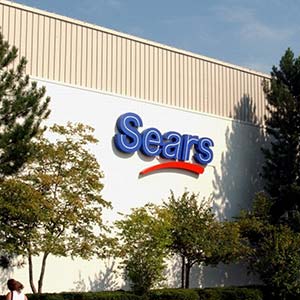
On Oct. 15, Sears, once a towering icon of American retail, filed for Chapter 11 in New York federal court, along with sister retailer Kmart, and now some are wondering if the legendary retailer will survive.
As part of the long-rumored filing, the company plans to close 142 stores out of its current 687. That’s on top of the 300 stores it’s already closed during fiscal 2018 and the 3,000 stores it’s closed over the last five years.
Eddie Lampert, owner of the company’s largest shareholder, ESL Investments, has stepped down as CEO, though he remains chairman. The company has formed a new office of the CEO, consisting of chief financial officer Robert A. Riecker; chief digital officer, customer experience and integrated retail Leena Munjal; and president of apparel and footwear Gregory Ladley.
According to a first-day declaration by Riecker, Sears Holdings’ balance sheet lists $6.94 billion in assets and $11.34 billion in liabilities. The immediate cause of the filing seems to have been a $134 million debt payment due today.
In recent years, the department store has struggled in the competitive retail climate. The company has not been profitable since 2011. In fiscal 2017, its comp sales declined 13.5 percent, though jewelry was cited as a top-performing category in its latest financial results.
Under Lampert, it has touted a “transformation” that would shift business to its online “Shop Your Way” portal. But critics said the brand had little resonance for young consumers and griped that a Lampert-engineered model that pitted divisions against each other made matters worse. Management has also allowed its stores to physically deteriorate. In 2017, employees complained to Business Insider that a Louisiana store was “infested with rats.”
Riecker’s declaration expressed hope the retailer will survive, saying the company was looking to exit Chapter 11 as quickly as possible. Prior to the filling, ESL Investments offered to purchase 400 or so EBITDA-positive stores as a going concern, as well as to infuse the retailer with another $300 million in cash.
But Marketwatch reported that many of its major lenders were pushing for liquidation, even before the filing.
“Today is a day that will live in retail infamy,” said Neil Saunders, managing director of GlobalData Retail, in an email. “That a storied retailer, once at the pinnacle of the industry, should collapse in such a shabby state of disarray is both terrible and scandalous in equal measure.”
He said that only a change in management can turn things around—but didn’t think that would be easy.
“Too much rot has set in at Sears to make it viable business. The brand is now tarnished, just as the economics of its model are firmly stacked against its future success,” Saunders said.
The retailer was founded in 1886 by railroad station agent Richard W. Sears, who purchased unwanted watches from a Minneapolis jeweler and resold them to coworkers. He eventually relocated to Chicago and partnered with watchmaker Alvah C. Roebuck to form a jewelry and watch company that would target underserved rural areas via a mail-order catalog.
In the early 20th century, it was considered a pioneering direct-to-consumer “disruptive” retailer, offering innovative credit and cash-and-delivery options. Just like Amazon began with books, Sears, Roebuck and Co. eventually branched out from jewelry and watches to a wide range of products; The New York Times dubbed it “the original everything store.”
It soon opened up brick-and-mortar stores, first in urban areas, then in the suburbs. Their sales soon surpassed the catalog’s. At Sears’ height, it owned Allstate Insurance, Dean Witter Reynolds, and Coldwell Banker real estate group. In 1973, it opened the Sears Tower in Chicago, which was then the tallest building in the world. It also launched both the Discover card and Prodigy, one of the first online networks, in association with IBM. It also saw great success with proprietary brands, including Kenmore appliances and Die Hard automotive batteries. Its Sears Home Services remains the leading provider of appliance repair services.
In 2005, as big-box retail grew more popular, Sears merged with Kmart, which was then itself emerging from bankruptcy, in a transaction engineered by Lampert. The combined company was then considered America’s third largest retailer. As late as 2014, Sears Holdings numbered 4,000 stores.
Lambert took over as CEO in 2013, and he’s been criticized for engaging in a series of financial transactions involving the company’s real estate and intellectual property, which, while they may have kept the company alive, also gave most of its assets to ESL Investments.
Sears Holdings currently employs 68,000 people. Its bankruptcy papers can be seen here.
(Image courtesy of Sears Holdings)
- Subscribe to the JCK News Daily
- Subscribe to the JCK Special Report
- Follow JCK on Instagram: @jckmagazine
- Follow JCK on X: @jckmagazine
- Follow JCK on Facebook: @jckmagazine